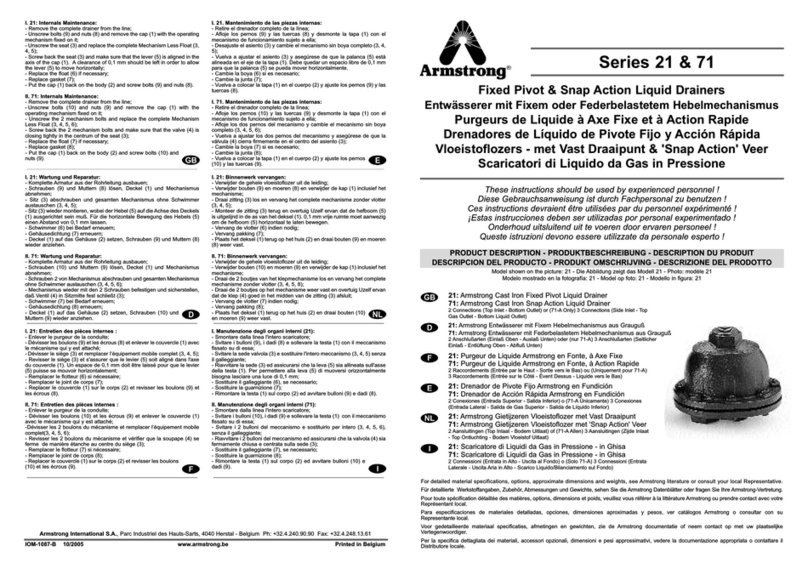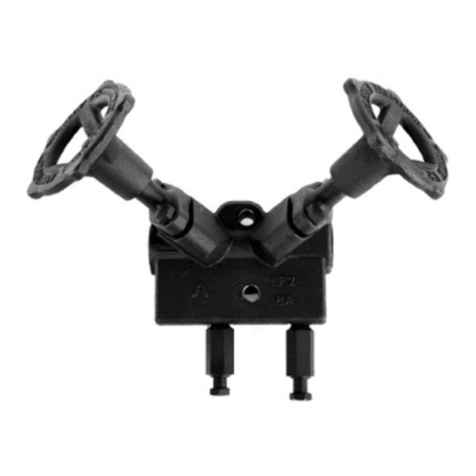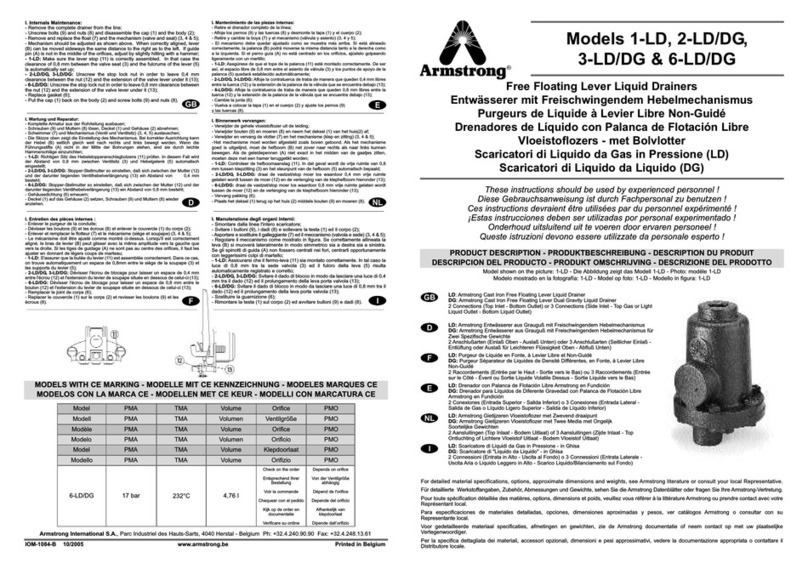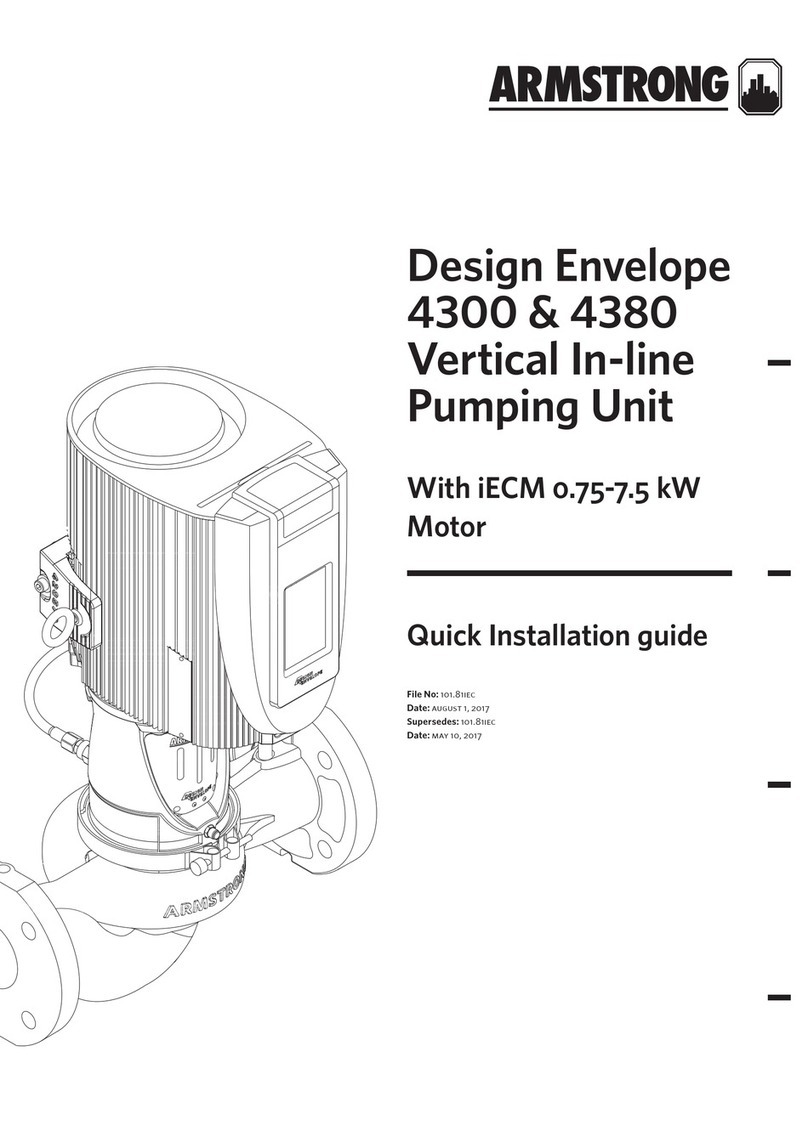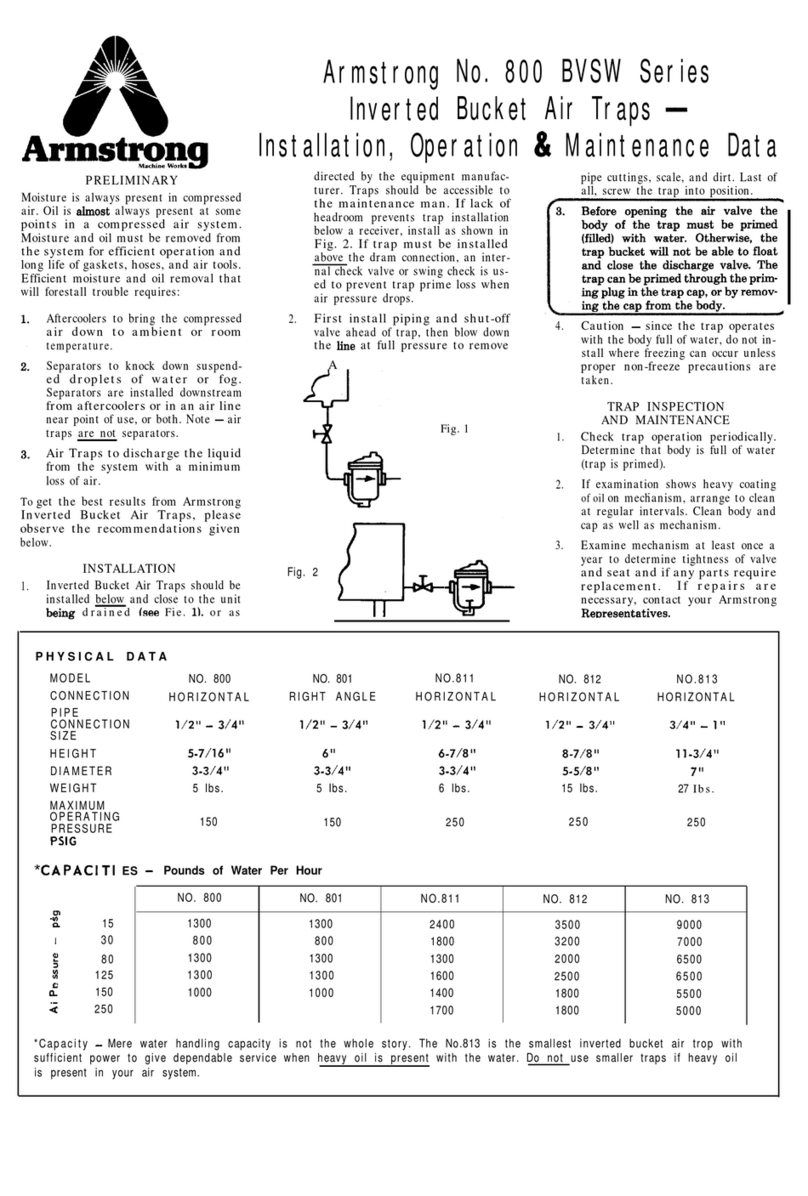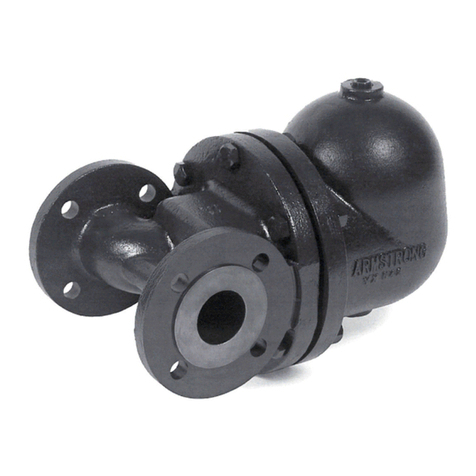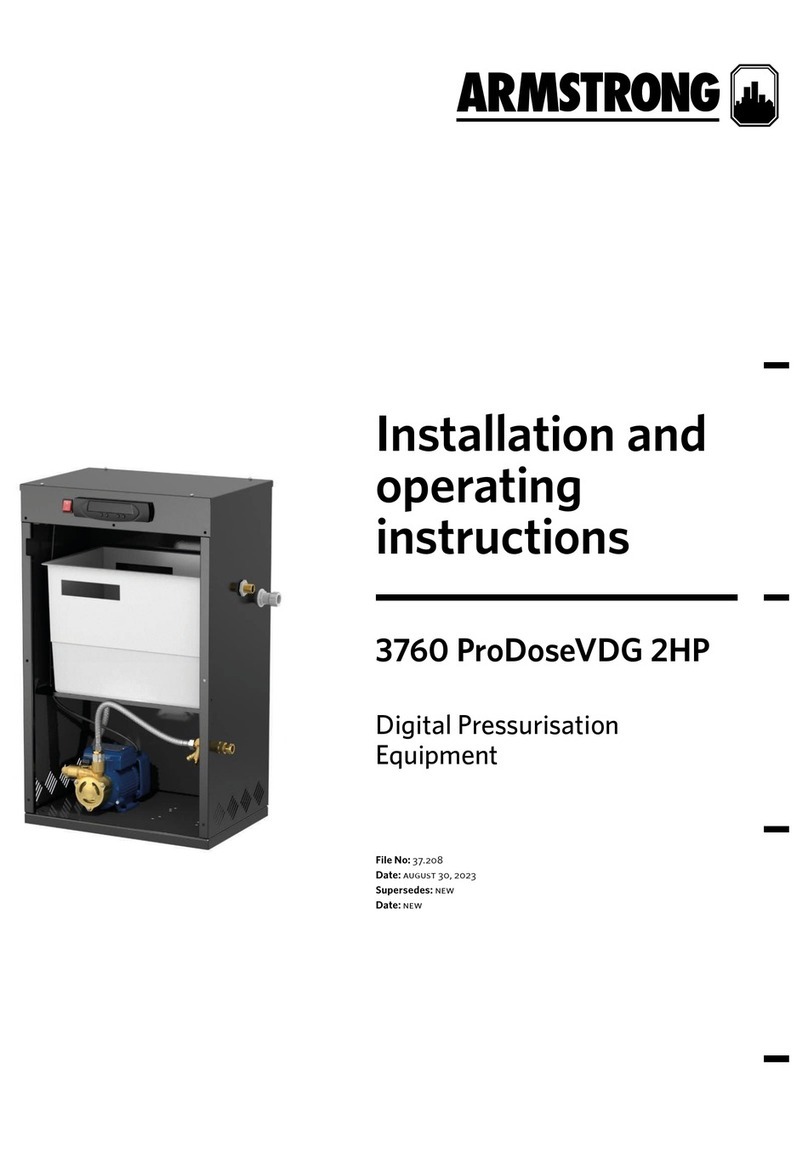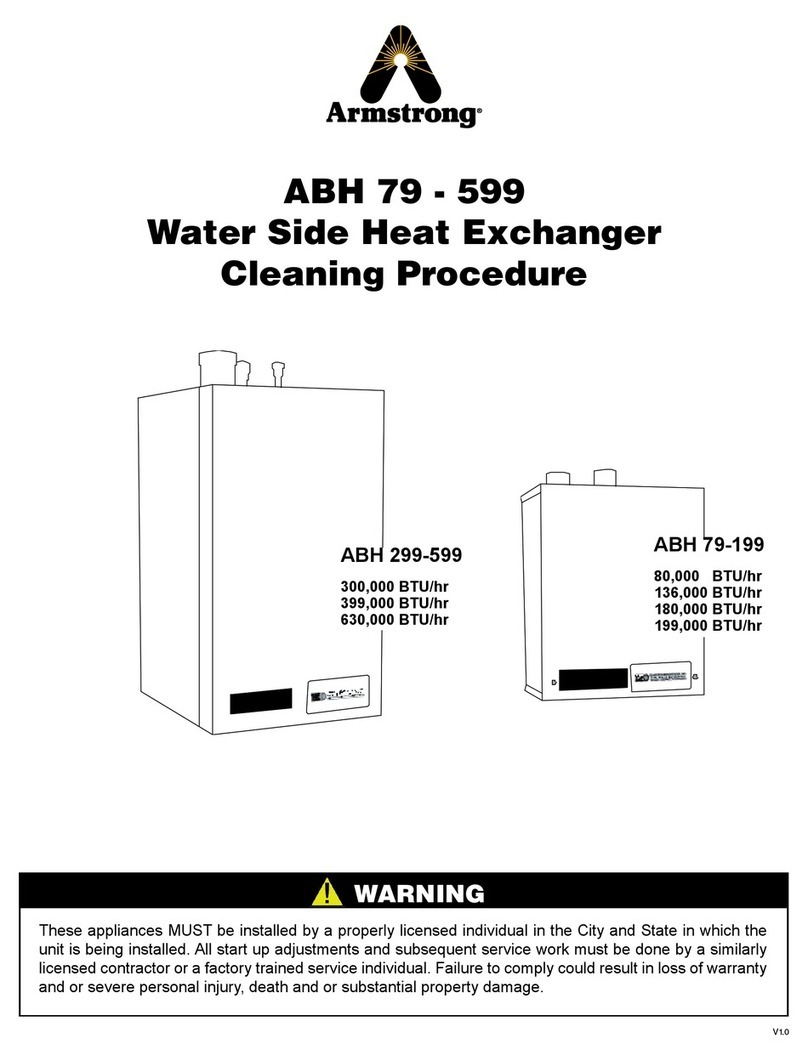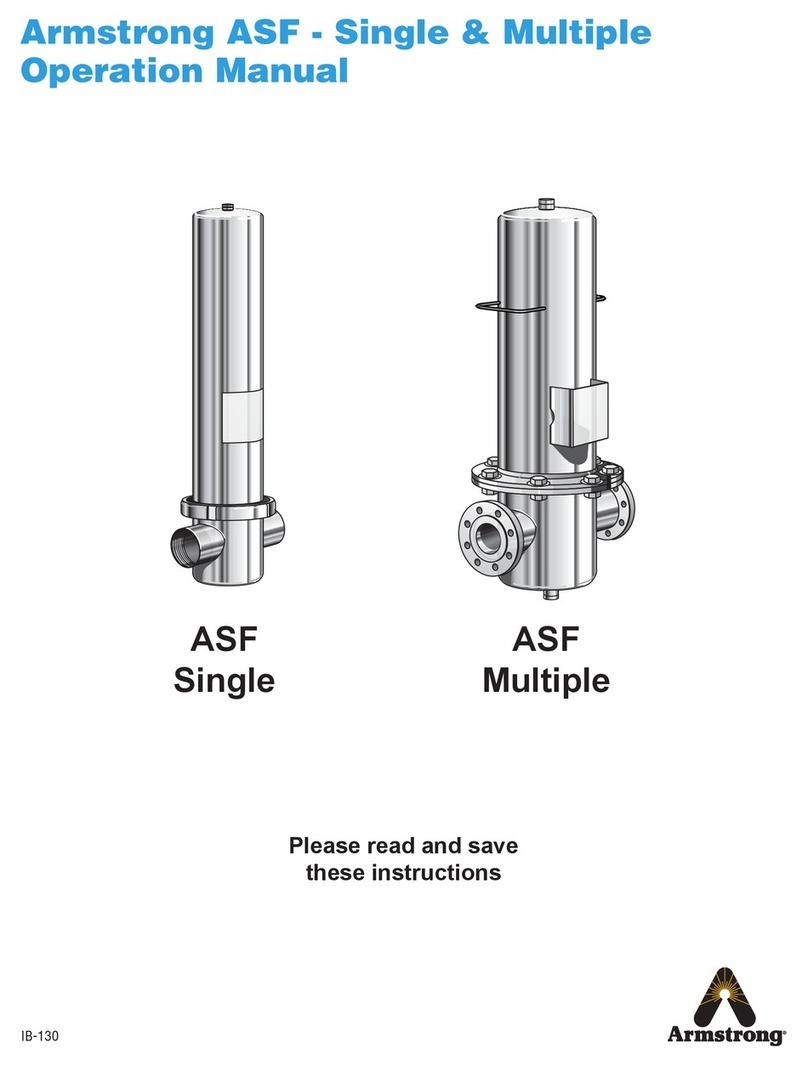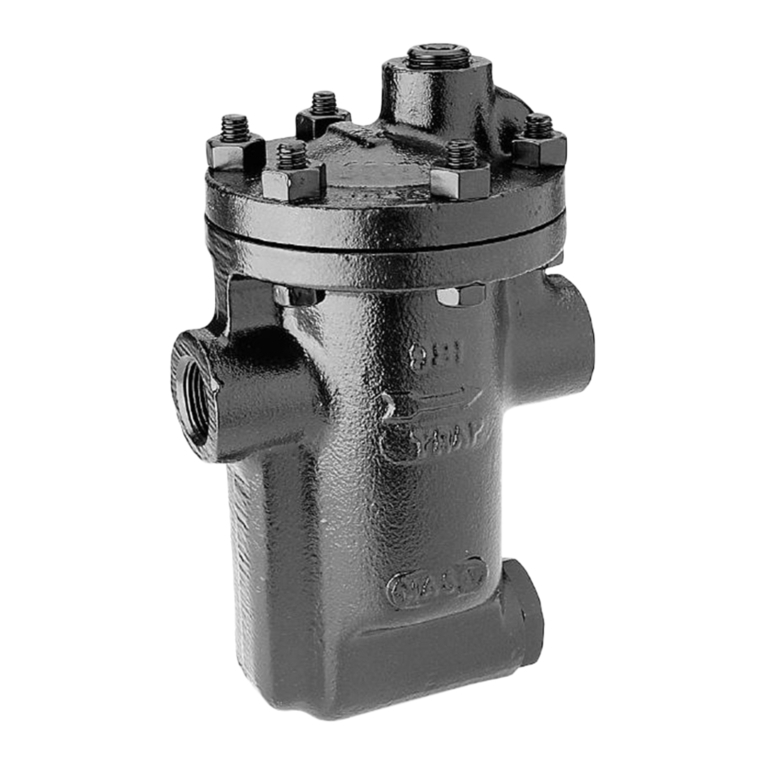
installation &
operating instructions
abx Brazed
Plate Heat Exchangers
2
4. connection location
Application fluid 1 fluid 2
Heating, Cooling cold water
a2a1
hot water
b1b2
Evaporator
single refrigerant
refrigerant
a2a1
chiller water
b1b2
Condenser refrigerant
a1a2
cooling water
b2b1
5. mounting suggestions
There are four dierent ways to mount the abx:
a Bottom support
b Sheet metal bracket,
c Crossbar& bolts,
d Stud bolts
• All items should be supported independently.
• Do not apply excessive forces to the fittings.
• Except for small sized abx030 model, our abx cannot be
fastened directly to the fittings/piping.
• Use flexible hoses or vibration dampers to reduce pulsation,
shock or vibrations that are caused by the operating system.
6. operating instructions
Start-Up Venting: During the filling process the unit must be
vented to eliminate any trapped air. This will assure proper
performance and longevity of the unit.
Shut Down: The two sides should be shut down simultaneously
and slowly. If this is not possible the hot side should be shut
down first. If the unit is shut down for an extended period of
time, it must be drained and cleaned. This is especially true
if there is a risk of frost or in the presence of any aggressive
medium inside the heat exchanger
7. anti-freezing protection
methods for bphe:
Any formation of freezing or icing will damage bphe and the
refrigeration system. The following methods will prevent bphe
evaporation from freezing:
• Use brine (e.g. glycol) when evaporation temperature is
close to the freezing point.
• Low working pressure will cause low evaporation
temperature. If the evaporation temperature is below 32°f
(0°c), it will cause water to freeze. Since the bottom portion
has the lowest temperature, it is the most likely spot for the
abx to crack.
• To start the refrigeration system, always start the water
pump for a few minutes and then start the compressor. To
stop the system, always stop the compressor first and then
stop the water pump.
1 Low Pressure Cut-o Switch (LP)
A low-pressure cut-o switch should be installed with
properly set values. When the actual evaporation pressure
is lower than the setting value, the compressor
will be cut o automatically.
2 Low temperature thermostat (LT)
The function of thermostat is to prevent evaporation
temperature going under 0°c. If evaporation temperature
is always above 0°c, then water has no chance to freeze
and expand
3 Water temperature sensor Installation of anti-freeze
temperature sensor neat the water outlet is another
method to prevent the water from freezing. The suggested
setting temperature is at 4°c for buering process
4 Water Flow Switch Installation of a water flow switch in
the water circuit can prevent possible abx freezing up due
to low water flow rate. Usually, low water flow rate may be
caused by malfunction of water pump, leaking Pipes, pipe
blockage due to pipe contamination or dirty filter.
ab
a1 b1
b2a2
d1 c1
c2d2
